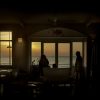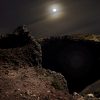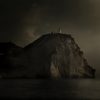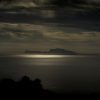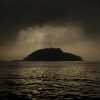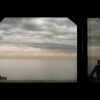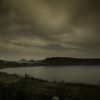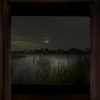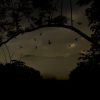VisionQuesT 4rosso is pleased to launch its new 2025/2026 exhibition season with Luciano D’Inverno’s exhibition “…and he saw a nymph lovely as a diamond,” curated by Ennery Taramelli.
The exhibition is part of the GENOVA START 2025 program, the collective inauguration of Genoa’s modern and contemporary art galleries: 27 galleries, featuring over 50 artists, painting, sculpture, photography, and every form of art from the 20th century to the present day.
GENOVA START is celebrating its twentieth anniversary this year with a double all-night event, Friday, October 3rd from 6:00 PM to midnight and Saturday, October 4th from midday to 10:00 PM. Like every year, it is an itinerary that winds through the city’s historic center, amidst the alleyways and historic buildings, allowing visitors to discover new trends and admire masterpieces by some of the world’s leading artists; including openings, performances, and multimedia events.
Luciano D’Inverno’s photographic work, on display this year, expresses the characteristic power of his gaze, which transcends any preconceived notion or framework of normal visual perception.
Instinctively, passionately, and almost, by his own admission, obsessively tied to his homeland, Luciano D’Inverno’s photographs narrate lands steeped in myths and legends, which have inspired artists, writers, and poets over the centuries. The Vesuvius area and the Phlegraean Fields; volcanic, fiery, and tormented lands in perpetual motion. This research is not tied to the imposing, historic icons of these places, but seeks to explore and trace, through twilight transition, the sensations of those who inhabit, experience, and love these lands.
As Susan Sontag writes in her novel The Volcano Lover, elevating Vesuvius to the role of one of the protagonists:
“Beneath the layering of history, everything speaks of love. According to the local folklore, the origin of many Neapolitan sites is an unhappy love story. Once these places were men and women, who, because of unhappy or frustrated love, underwent a metamorphosis into what one sees today. Even the volcano Vesuvius was once a young man, who saw a nymph lovely as a diamond. She scratched his heart and his soul, he could think of nothing else. Breathing more and more heatedly, he lunged at her. The nymph, scorched by his attentions, jumped into the sea and became the island today called Capri. Seeing this, Vesuvius went mad. He loomed, his sighs of fire spread, little by little he became a mountain. And now, as immobilized as his beloved, forever beyond his reach, he continues to throw fire and makes the city of Naples tremble. How the helpless city regrets that the youth did not get what he desired! Capri lies in the water, in full view of Vesuvius, and the mountain burns and burns and burns…”
Ennery Taramelli, curator of the exhibition, writes in the accompanying text:
[… but it is not only Vesuvius that has fascinated and continues to fascinate the author. It should not be forgotten that the entire Vesuvius area is marked by volcanic activity.
“Phleg”, the lava fire that burns in the bowels of the subsoil and which over the course of geological eras has shaped the earth’s surface, is the name that the Greeks gave to the Campania region, keeping alive in the name of the Campi Flegrei the union of physical geography and sacred geography; that union that finds a solemn echo in the name of a place that also belongs to the sphere of myth, that of lake Avernus that Virgil postulated was Aeneas’ access to the Underworld.
And it is precisely the chthonic, terrifying and therefore sacred dimension of this territory that Luciano D’Inverno chose to fix in images and visions.
With the title Here the feet do not rest on the ground, the Campi Flegrei are the theme of a work published in 2007, following a first work in 2003 entitled Vesevo, from the name that Leopardi gave to the volcano in the poem La Ginestra.
Twenty years later the author has returned to photograph Vesuvius and some of the most evocative places in the Campi Flegrei, from Capo Miseno to the islands of Capri and Nisida, from the Rione Terra of Pozzuoli to Lake Averno, to Lake Lucrino with the Casina built by Vanvitelli. But this time these places are photographed in a particular light, when, once the last flashes of the setting sun have ceased, the night and the moon take over the world.
Nor is this a random choice since for the author one does not have to have been born in these places to know that on the unstable seismic earth does not allow “to put one’s feet on the ground”:
“one thing is certain: when alive we put our feet on the ground. But in these places this certainty disappears, the distance between the living and the dead is minimal; it is as if linked to a vertical movement. The dead are present and the shadows of the living take on another meaning”.
If it is the mystical union of life and death that the Campania region devotes to its inhabitants, this means that to live there one must abandon all certainty; one must abdicate any hold and claim to the mystery of life that is confirmed as the great mystery of Mother Nature. Therefore by choosing to photograph places in the twilight and night, the author abandons the guise of the daytime traveler to transform himself into the nocturnal traveler who wanders in a space of interregnum between night and day, between darkness and light, between death and life, or between Time and the suspension of Time.
After all, this is the magic of the wonderful artifice called photography, which by transforming reality into fiction suspends it in a spatial and temporal distance that pushes on the limit of reversal. And it is thanks to this transfiguration that visible reality becomes an immeasurable mystery to be fixed through the focus of the lens which bears the sign of Infinity imprinted on the ring of times.
Ennery Taramelli, Art Historian and Critic, writes essays using a phenomenological and hermeneutic methodology.
TECHNICAL INFORMATION:
– Archival Fine Art Pigment prints on Carton Plume Canson and oak frame
cm 70×90 – Edition of 6 + 1 a.p.
– Artist book in a box format with 13 cards/prints, cm 21 x 21
Luciano D’Inverno was born in Acerra (Naples) in 1967. At the beginning of the nineties he moved to Naples, studying at the Academy of Fine Arts where he graduated in Scenography. In that period, he specialised in advertising photography for the jewellery industry, starting to collaborate, as he does to this day, with the most prestigious national and international publications. At the same time, he was interested in landscape and research photography, focusing especially on the morphology of the suburbs and the phenomenology of the gaze in the vision of space. In 1993 he began an intense collaboration with the art historian and photography and photography critic Ennery Taramelli which led to the 2003 publication Vesevo ( IntraMoenia Editions) and to the 2007 Campi Flegrei – Qui i piedi non si posano per terra (IntraMoenia Editions), with texts by Ennery Taramelli and Olga Scotto di Vettimo. In the same year this work was presented at PAN (Palazzo delle Arti di Napoli). His works have been displayed in several solo and collective exhibitions: in 2008 Vita Fantasma at Fabbrica del Vapore in Milan; in 2009 Viaggio in Europa at Galleria 24 in Naples, in an collective exhibition with Araky, Yokosuka and Zaza; in 2011 he participated in a Biennale of contemporary video-photography at Alessandria, curated by Sabrina Raffaghello; in 2019 the photographic exhibition Quattro Tempi at Reggia di Caserta, curated by Gabriella Ibello (Arte’m Editions, Naples). In 2022 he is among the winners of Strategia Fotografia 2022, a competition notice promoted by the Directorate-General for Contemporary Creativity of the Italian Ministry of Culture for the valorisation of fine-art photography, with a project commissioned by the Royal Palace of Caserta for the 250th anniversary of Luigi Vanvitelli’s death.

